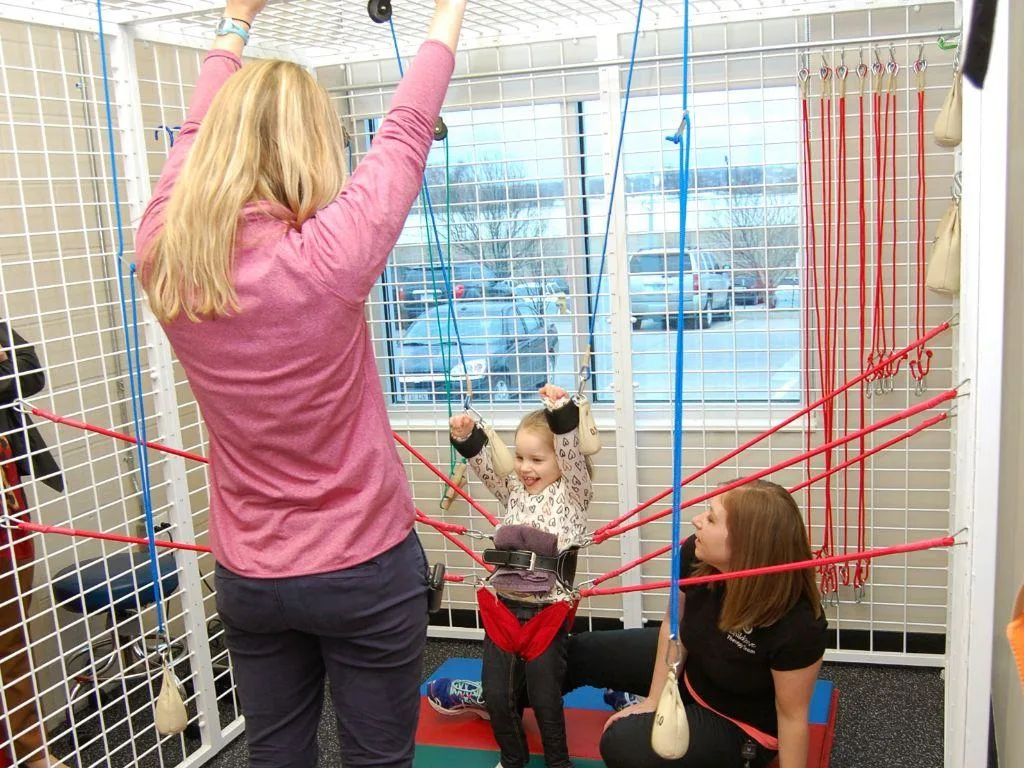spider cage therapy for Cerebral Palsy: A Path to Improved Motor Function
Introduction
Cerebral palsy is a neurological disorder that affects motor function, often leading to challenges in mobility and muscle coordination for affected children. Fortunately, there are innovative therapeutic approaches like spider cage therapy{SCT} that can make a significant difference in their lives. In this article, we will delve into the world of spider cage therapy for cerebral palsy and explore how it can benefit children in their journey towards improved motor function.
What is spider cage therapy for Cerebral Palsy?
SCT, despite its intriguing name, has nothing to do with actual spiders. It is an active form of treatment utilised in physical and occupational therapy for children with cerebral palsy. The therapy involves placing the child in a specialised device, often referred to as a universal exercise unit, while they wear a belt or suit that connects to multiple elastic bungee cords with varying resistance levels.
The primary goal of spider cage therapy is to isolate specific muscle movements, allowing therapists to work on strengthening underused muscles. The bungee cords provide dynamic support, enabling children who may struggle with balance and mobility to engage in exercises safely.
Key Benefits of spider cage therapy
- Muscle Strengthening: SCT helps prevent muscle atrophy and supports movement by targeting specific muscle groups. The bungee cords provide resistance that challenges these muscles, gradually increasing their strength over time.
- Range of Motion: The therapy helps expand joint range of motion, allowing children to achieve a greater degree of flexibility and mobility.
- Balance and Coordination: SCT enhances balance and coordination, crucial skills for daily activities like sitting, standing, and walking.
- Reduced Spasticity: It can reduce spasticity, which is a common issue in cerebral palsy. Lengthening muscles through spider cage therapy can alleviate spasticity and promote smoother movements.
- Developmental Milestones: spider cage therapy supports the achievement of developmental milestones such as independent standing and walking, fostering greater independence and self-confidence.
- Motor Control: This therapy can be tailored to address motor control at various levels, accommodating each child’s unique needs and abilities.
- Confidence Boost: As children make progress in their therapy sessions, they gain confidence in their abilities, which can have a positive impact on their overall well-being.
- Independence: spider cage therapy allows children to engage in movements and exercises independently, reducing their reliance on others for support.
Why spider cage therapy Works
The effectiveness of spider cage therapy for children with cerebral palsy can be attributed to the concept of neuroplasticity. Neuroplasticity is the brain’s remarkable ability to adapt and rewire itself in response to repeated movements and demands. When a specific movement is consistently practised, the brain rewires itself, strengthening the neural pathways associated with that movement.
Children’s brains are particularly receptive to neuroplasticity, making it easier for them to learn new movements and replace motor impairments. Early intervention with therapies like spider cage therapy can capitalise on this plasticity, helping children develop proper movement habits from a young age.
Spider cage therapy is engaging, fun, and challenging for children. When an activity is enjoyable and presents a challenge, children are more likely to engage in it for extended periods, facilitating more repetitions. The therapy engages the entire body, making it a holistic and stimulating treatment method that encourages children to perform numerous repetitions, a critical component of training the brain to adapt.
Conclusion
Spider cage therapy for cerebral palsy is a safe and effective rehabilitation approach that offers numerous benefits for children with this condition. By targeting muscle strengthening, range of motion, balance, coordination, and more, it plays a vital role in improving motor function and overall well-being It’s important to mention that Jeevaniyam Ayurveda offers a comprehensive approach to care, combining various therapies and methods to provide personalised treatment for these children. By integrating spider cage therapy with other therapies like Ayurveda, children with cerebral palsy can receive a holistic and tailored treatment plan, enhancing their chances of improvement and a better quality of life.









